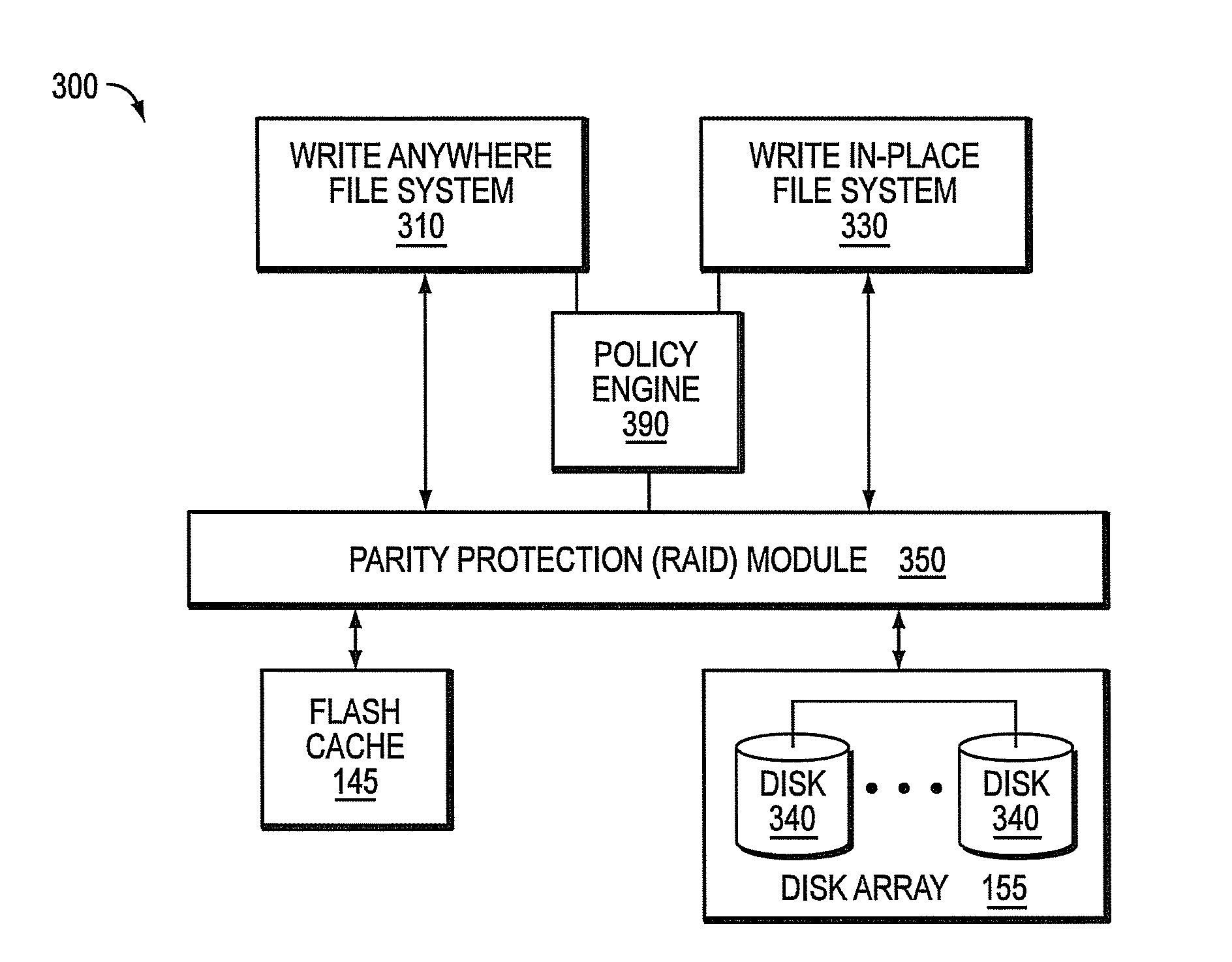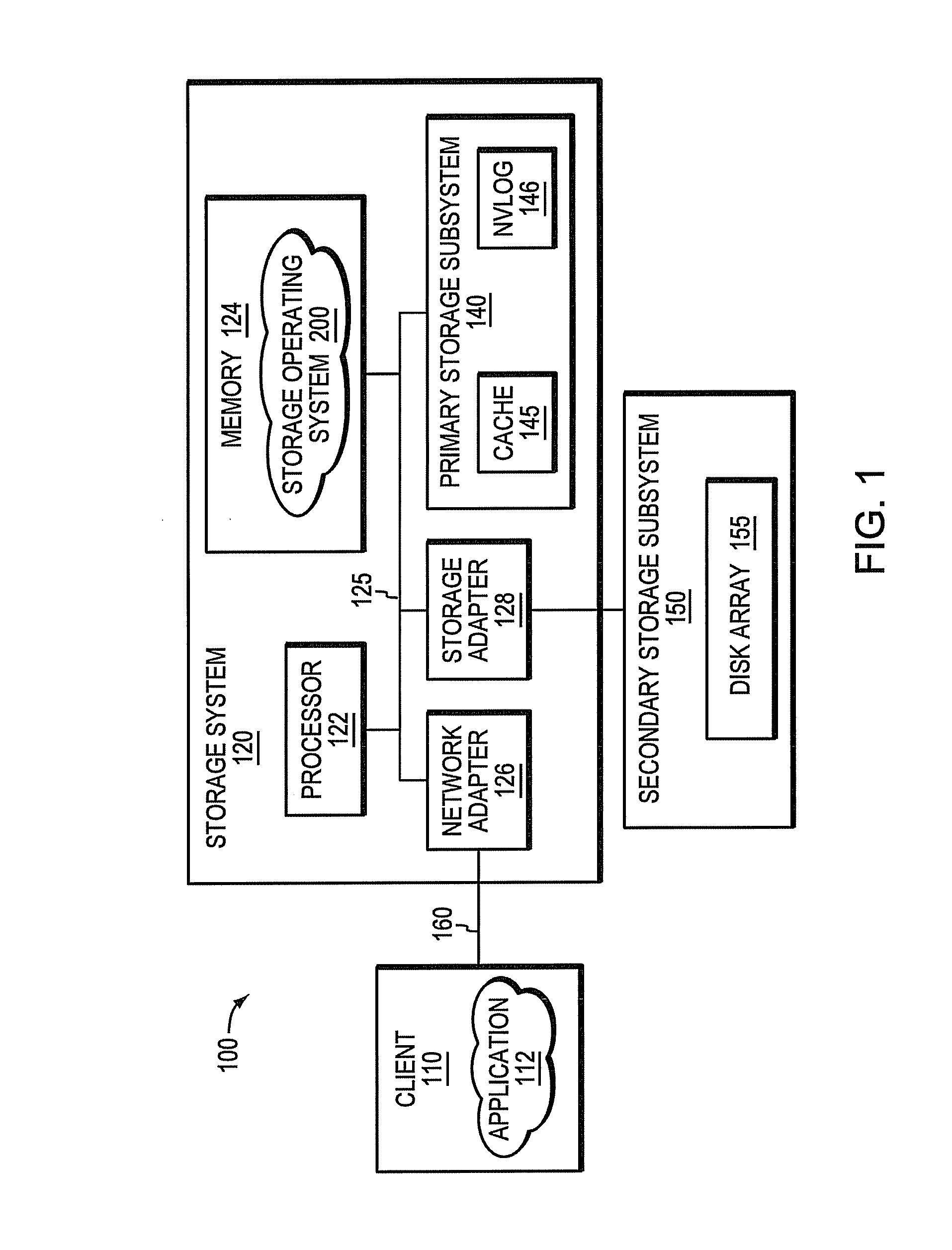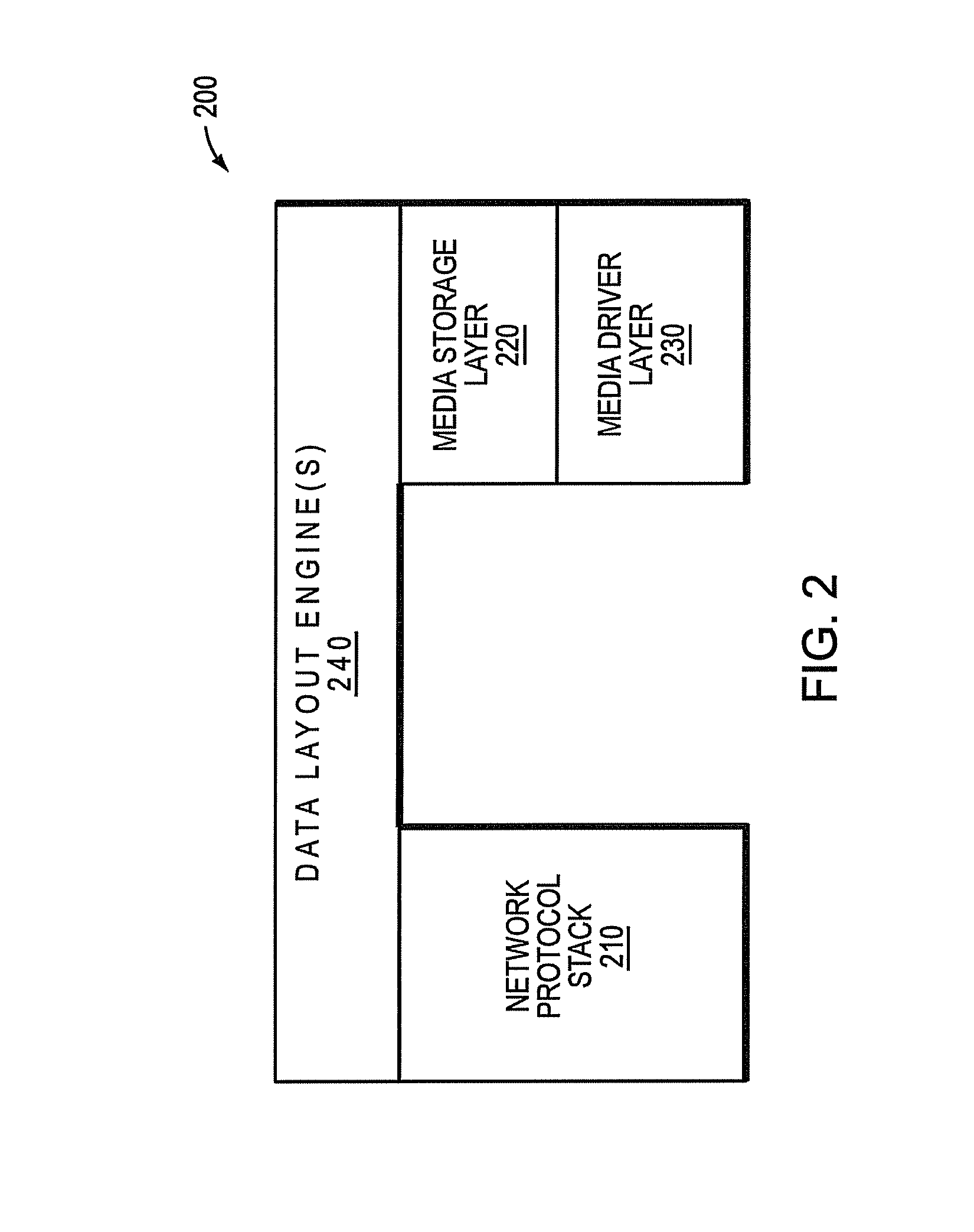Cache-based storage system architecture
a storage system and cache technology, applied in the field of storage systems, can solve the problems of large dram caches that are cost prohibitive, do not perform well on random access, and substantially slow so as to improve the performance of disks, improve write performance, and fast random read performance.
- Summary
- Abstract
- Description
- Claims
- Application Information
AI Technical Summary
Benefits of technology
Problems solved by technology
Method used
Image
Examples
Embodiment Construction
[0015]FIG. 1 is a schematic block diagram of an environment 100 including a storage system that may be advantageously used with the present invention. The storage system 120 is a computer that provides storage services relating to the organization of information on writable, persistent electronic and magnetic storage media of primary and secondary storage subsystems, respectively. To that end, the storage system 120 comprises a processor 122, a memory 124, a network adapter 126, a storage adapter 128 and a primary storage subsystem 140 interconnected by a system bus 125. The storage system 120 also includes a storage operating system 200 that implements a virtualization system to logically organize the information as a hierarchical structure of data containers, such as files and logical units (LUNs), on the primary and secondary storage subsystems 140, 150.
[0016]The memory 124 comprises storage locations that are addressable by the processor and adapters for storing software program...
PUM
 Login to View More
Login to View More Abstract
Description
Claims
Application Information
 Login to View More
Login to View More - R&D
- Intellectual Property
- Life Sciences
- Materials
- Tech Scout
- Unparalleled Data Quality
- Higher Quality Content
- 60% Fewer Hallucinations
Browse by: Latest US Patents, China's latest patents, Technical Efficacy Thesaurus, Application Domain, Technology Topic, Popular Technical Reports.
© 2025 PatSnap. All rights reserved.Legal|Privacy policy|Modern Slavery Act Transparency Statement|Sitemap|About US| Contact US: help@patsnap.com



